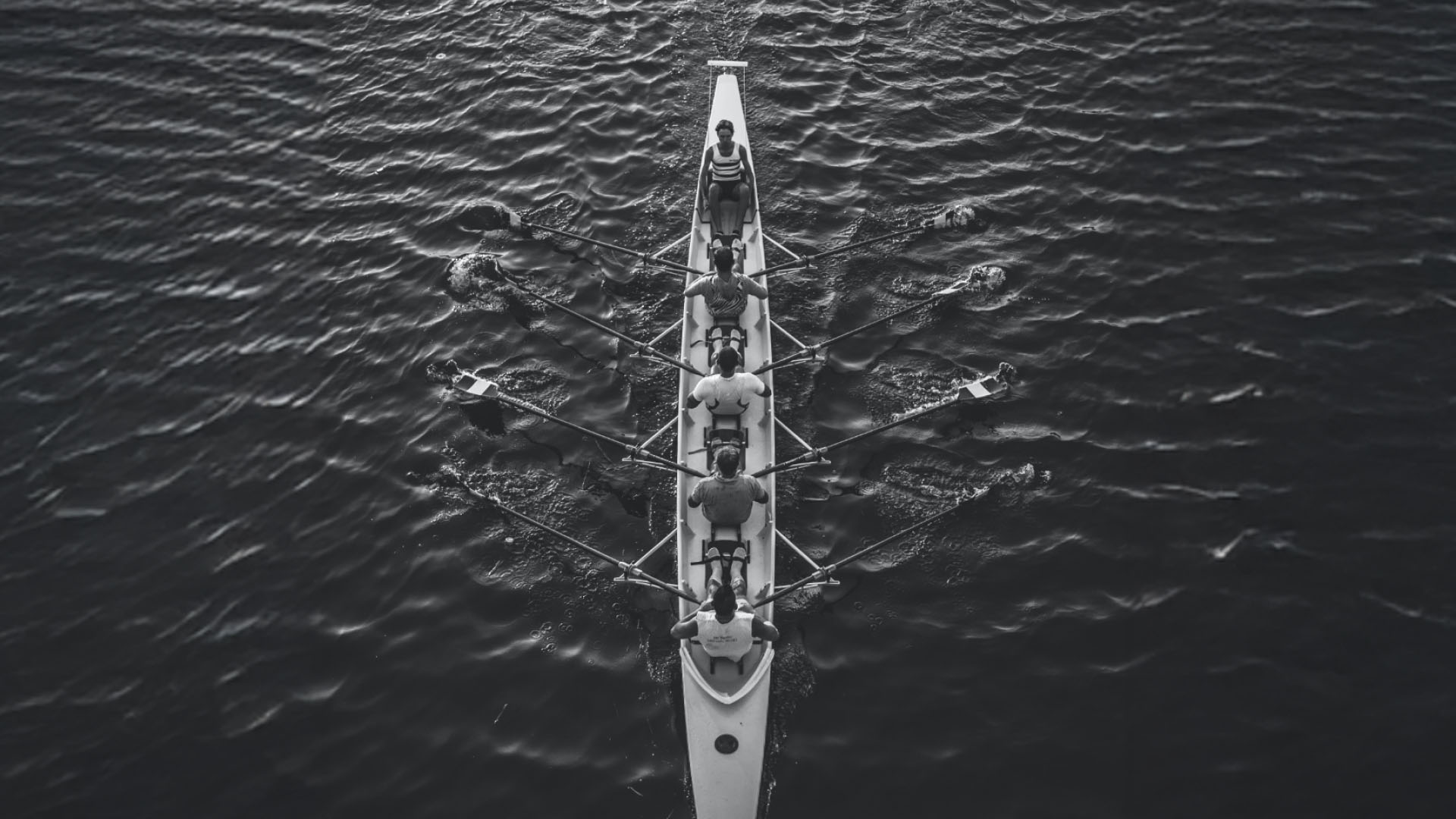Business Is a Team Sport: For the Good of the Boat
My son was a rower in high school, and in one particular season, his team placed in the top three for every regatta except one. I remember that race well because, given the competition, I thought they should have won that day. The loss was rather disappointing for everybody involved. Still, I came away with an important lesson that still guides my choices as a founder today.
There were a whole host of reasons why the rowing team didn't do as well as it should have. For one, the team’s usual coxswain, the non-rowing quarterback on the boat, had been disciplined earlier that week and put on a lower-ranked boat for the regatta as a result. Without their usual coxswain, my son’s team just didn't have the same rhythm and direction they normally had. The truth is, I was miffed at the coach and felt the team had been unfairly disadvantaged. After all, if only one person had been behaving poorly, was that reason enough to cost everyone else the win?
But it’s actually more complex than that. After reflecting on the loss, three thoughts went through my head:
- It’s important to try to take something positive from every setback. We’re always where we’re supposed to be, learning the lessons we need to learn. Much as we try to, most of us don't always remember to do that.
- The team should have stepped up and helped the coach help the coxswain. They knew he was mouthing off. They knew his attitude was impacting the boat. If someone had intervened earlier, would it have been enough to get the coxswain to buckle down and focus?
- The entire team is 100% only as good as its weakest member. The team dynamics on a boat with eight rowers and a coxswain make it one of the most collaborative sports out there. Consequently, wouldn’t it have been beneficial for the team to lean into awareness of its weakest link while genuinely and empathetically helping that person improve?
The lesson, then, is about teamwork and holding each other accountable when it matters most. And that’s an incredibly important lesson for a founder to learn because business is undoubtedly a team sport.
How Do We Identify Our Weakest Link?
Ever since that weekend, I’ve found myself occasionally pondering… What are the pros and cons of calling out the weakest link on our teams? How often would be optimal? Every 90 days? Less often, or more? How strong, honest, and confident would a team need to be to have these discussions successfully? How strong would it need to be to talk about that weakest link truthfully, specifically, and positively? To be genuine and kind about the critiques rather than hide from them?
Every team has a weakest link. Most team members know this. What’s a team that has built a high-trust foundation to do: hide from it, or work on it for the good of the boat?
And how strong does a leader have to be to even talk about this idea with their team members? What if I, the captain, turn out to be the weakest link?
Business is a team sport. It’s actually a team-of-teams sport. To some extent, we’re only as good as our weakest link. So what would it be like if our culture excelled at consistently strengthening our weakest links? Over time, what would be the probability that every one of us would eventually become the weakest link?
What if we embraced a forever shift that incorporated becoming stronger and stronger by shifting toward helping our weakest links? What if we were capable of forever tightening every spoke on our collective wheel?
Prioritize Your Team’s Health to Build Trust
I can’t help but wonder whether embracing a process of always knowing who the weakest link is and focusing on helping that person become stronger would benefit high-trust teams. If we did this consistently, quarter by quarter, 90 days at a time, would we create a super high-trust culture that excels at helping everyone become a better and better version of the best version of themselves and our collective whole?
At Ninety, we conduct several team-building exercises at our Quarterly and Annual Planning Meetings with this aim. One of them is the Five Dysfunctions of a Team exercise, which I’ve discussed on this blog before, and another is the One Thing exercise, which asks each team member to stop or start one behavior for the entire team’s benefit. The One Thing exercise is so uncomfortable for most people that we don’t even recommend it unless your team already has a relatively high trust score.
In my opinion, it’s extraordinarily rare for teams to be truly honest and kind about their weaknesses. We overprioritize belonging and underprioritize helping one another. Why? Because humans have an emotional need for connection, and we ultimately make the choices we think will best enable us to survive. We prefer to be part of a collective whole in which the strongest rally together and ensure the group’s overall survival. It’s a more natural path than taking a risk to help a weak link thrive — especially at our own or the group’s expense.
But the example of my son’s rowing team showed the value of acknowledging the weakest link and helping them become stronger so the whole team can rise.





